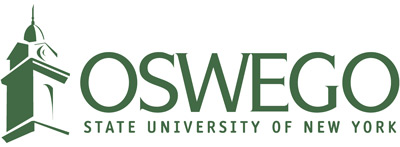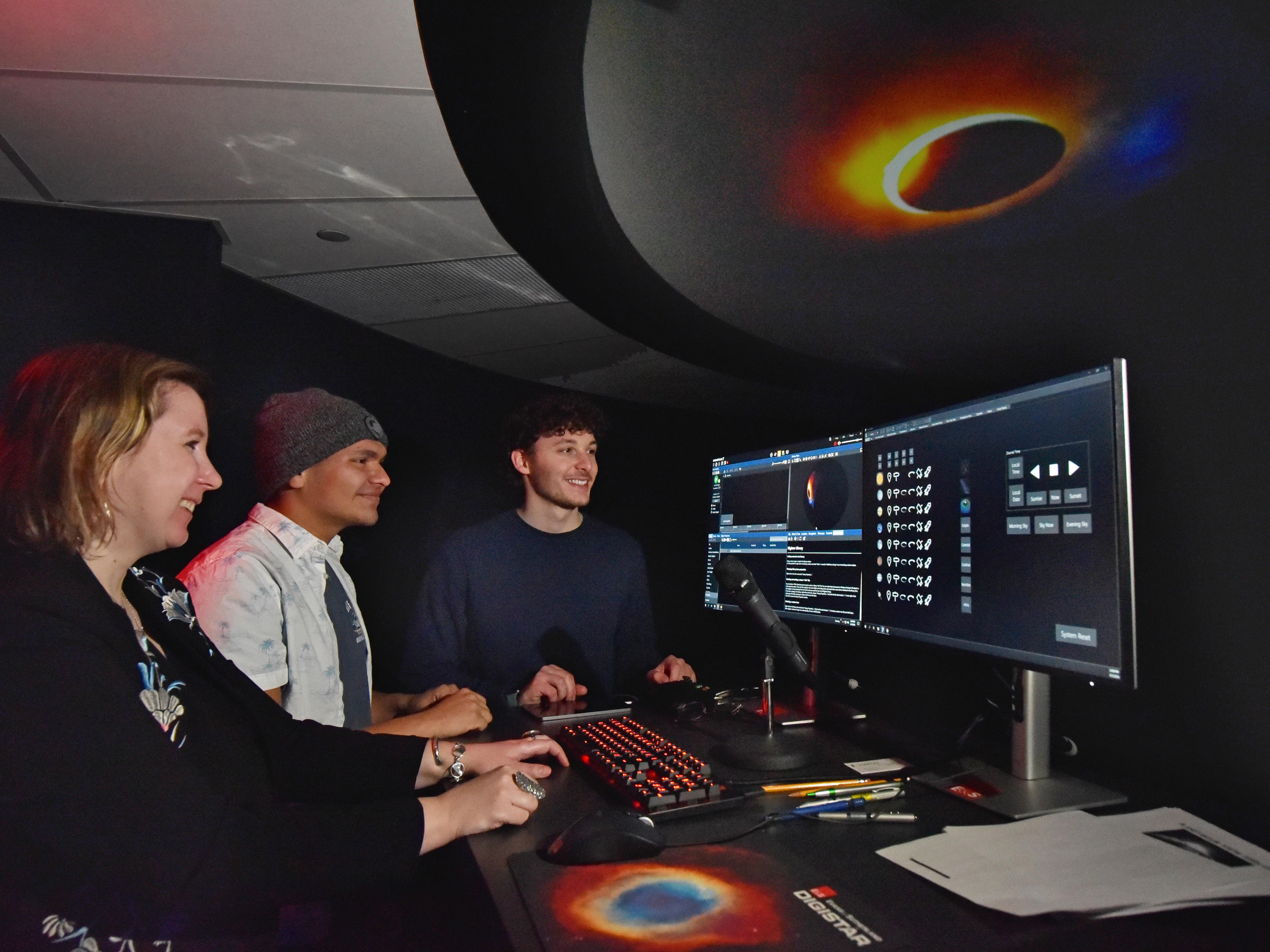Natalia Lewandowska (left), director of the Shineman Center planetarium and a physics and astronomy faculty member, works with students developing programs during a previous semester. A newer “Astronomy 390” class offers students the chance to develop essential skills in science communication and public engagement while deepening their understanding of the universe.
SUNY Oswego’s Shineman Center planetarium serves as a gateway to the cosmos that provides students with an immersive experience in astronomy.
Under the guidance of the planetarium’s director, Natalia Lewandowska of the Department of Physics and Astronomy, the “Astronomy 390” class offers students the chance to develop essential skills in science communication and public engagement while deepening their understanding of the universe.
“Astronomy is an endless journey of discovery where one answer leads to a dozen questions,” Lewandowska explained.
The planetarium offers a transformative educational experience, allowing students to engage with astronomy beyond traditional classroom settings. Students can virtually travel to other planets, land on Mars or Venus, and visualize astronomical phenomena in ways that traditional lectures cannot replicate. For example, one student demonstrated solar eclipses as they would appear from different planets, enhancing an audience’s understanding of celestial mechanics.
The planetarium serves as a bridge for students who may not have always felt confident in science. Beyond the academic teaching, students learn to present complex topics in an accessible manner.
Student Alex Fiorentino described the course as his favorite class ever, highlighting how it allowed him to “actually create something [he] could take pride in,” blending creativity with scientific knowledge.
Lewandowska’s teaching principle is that science should be accessible to everyone, and to foster curiosity, her students are given the platform to have their “aha” moments that reinforce their learning.
Fiorentino shares that student-run shows attracted peers who might not usually attend science events. By engaging with non-traditional topics -- such as pulsars and gravitational waves –– students spark curiosity and broaden community interest in astronomy. The hands-on nature of these projects cultivate confidence and public-speaking skills, preparing students in science communication and beyond.
Participation in “Astronomy 390” provides students with official recognition of their skills, enhancing their job prospects. The course prioritizes conceptual understanding over mathematical computation, making astronomy accessible to a broader audience. It encompasses undergraduate opportunities to better understand how to bridge the gap between academia and the public.
By fostering first-person learning, public engagement and collaboration, the program equips students with skills that extend beyond astronomy. Whether pursuing a career in science, communication or education, students emerge from this course with a deeper appreciation for the cosmos and the ability to share its wonders with others.
Located in room 223 of the Shineman Center, the planetarium has shows every Tuesday and Thursday through the end of the semester, beginning at 6 p.m. These shows are free of charge and are open to students, faculty, staff and the public.
–- Written by Keila Aquino-Lobato of the Class of 2025




